 W
WSF Ammonia is a steam-powered railway ferry on Lake Tinn in Telemark, Norway. The ferry was one of the four railway ferries on Lake Tinn that connected the Rjukan Line with the Tinnoset Line. This system was used by Norsk Hydro to transport chemicals from Rjukan to the port in Skien. The ferry is one of four remaining steam-powered railway ferries in the world, and can still be seen docked at Mæl, Norway.
 W
WThe Atlungstad Distillery is a distillery in Stange in Hedmark county, Norway. It was established in 1855 by a group of farmers. Regular distillation was discontinued in 2000, but trial runs were later carried out. In 2012, the distillery was added to the Norwegian Directorate for Cultural Heritage list of priority technical and industrial cultural heritage, after which NOK 7 million was allocated to restore the distillery to its former condition. An additional NOK 4.7 million was allocated for the distillery in 2017. It has been owned by the company Atlungstad Brenneri AS since 2011. In October 2013, the owners signed a cooperation agreement with the Arcus company that they would restart regular production of akvavit at the Atlungstad Distillery. The distillery is open for tours in the summer.
 W
WAustre Moland Church is a parish church of the Church of Norway in Arendal Municipality in Agder county, Norway. It is located in the Brekka, along the lake Molandsvann. It is one of the churches for the Moland parish which is part of the Arendal prosti (deanery) in the Diocese of Agder og Telemark. The white, wooden church was built in a cruciform design in 1673 using plans drawn up by the architect Ole Ormsen. The church seats about 496 people.
 W
WBekkelaget Church is a long church located in Bekkelaget in Nordstrand, a district of Oslo, Norway.
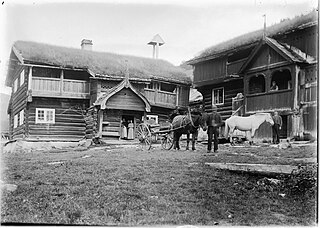 W
WThe Bjølstad Farm is a farm in Heidal in the municipality of Sel in Innlandet county, Norway.
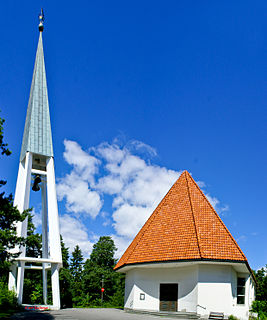 W
WBygdøy Church is a church that was built in a fan plan in 1968 on the peninsula of Bygdøy in Oslo, Norway. It replaced the Bygdøy chapel, which burned ten years earlier.
 W
WFåberg Church is a cruciform church in the village of Fåberg in the municipality of Lillehammer in Innlandet county, Norway.
 W
WThe Fåberg stone is a runestone next to Fåberg Church in the village of Fåberg in the municipality of Lillehammer in Oppland County, Norway. It is registered with the Norwegian Directorate for Cultural Heritage under number 58558.
 W
WThe Fetsund Battery is an artillery battery in Fetsund in Viken county, Norway. Locally, the battery is also known as Vilbergfestningen 'the Vilberg fortress'.
 W
WThe Fetsund Booms are a Norwegian national cultural heritage monument, log driving museum, and wetland center at the outlet of the Glomma River into Lake Øyeren in Fetsund in Viken county. The Fetsund Booms were set up as a timber sorting facility in 1861 and operated until 1985, when log driving came to an end on the Glomma River. Today the facility is part of the Akershus Museum.
 W
WFollebu Church is a church dating from 1260 in the municipality of Gausdal in Innlandet county, Norway.
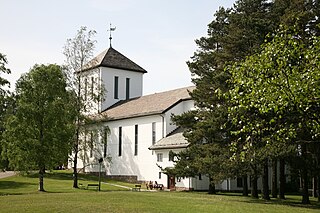 W
WGrefsen Church is a long church located in Grefsen, a neighborhood of Oslo, Norway.
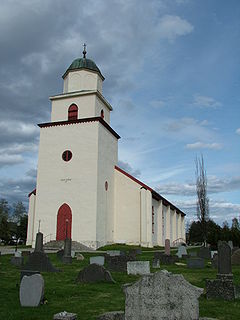 W
WGrue Church is a long church dating from 1825 in Grue in Innlandet county, Norway.
 W
WHeidal Church is a church in Heidal, a side valley of the Gudbrand Valley, in the municipality of Sel in Innlandet county, Norway.
 W
WThe Helland House is a historic house in Bergen, Norway.
 W
WKroer Church is a "long church" in the Deanery of Søndre Follo at Ås, in Viken county, Norway.
 W
WKvam Church is a cruciform church in the village of Kvam in the municipality of Nord-Fron in Innlandet county, Norway. It was built in 1952. The building was designed by Magnus Poulsson and it is decorated with carvings by Edvard Bakkom, Mathias Fjerdingren, and Anders Johnsgard, and painting by Arve Hagen. The carving on the altar—originally executed by Eistein Kjørn and later moved to Kvam—was restored by Ragnvald Einbu.
 W
WKystpilgrimsleia, Norwegian for "Coastal Pilgrim Route", is the name of the pilgrim way that runs along the west coast of Norway and culminates at the Nidaros Cathedral in Trondheim. Kystpilgrimsleia is a joint project between four counties and four diocese to create a comprehensive and sustainable tourism product that promotes cultural heritage and provides a unique experience of more all the fjords of Norway.
 W
WLovisenberg Church is a church in the neighborhood of Lovisenberg in the district of St. Hanshaugen in Oslo, Norway. The church is a basilica in Romanesque Revival style. The building is made of red brick and has a gable roof covered with slate. The bell tower is located to the side of the ridge and baptismal sacristy is to the right of the main entrance.
 W
WThe National Protection Plan for Roads, Bridges, and Road-Related Cultural Heritage was published by the Norwegian Public Roads Administration in 2002 in the volume Vegvalg. The plan contains road heritage in Norway dating from 1537 to 1999 that has been owned or used by the state. In addition to roads and bridges, some of the Public Roads Administration's own machinery, equipment, and buildings are included in the plan. However, no ferries are included in the plan, and streets, boulevards, stepping stones, and winter roads are not systematically registered.
 W
WThe Neptune Herring Oil Factory is a former industry in the town of Melbu in Norway's Vesterålen district. It has been given cultural heritage status.
 W
WNes Church is a cruciform church dating from 1250 in Ringsaker in Innlandet county, Norway.
 W
WThe Nesset Parsonage lies 3 kilometers (1.9 mi) southwest of Eidsvåg on the south side of Langfjorden in the municipality of Nesset, Norway.
 W
WThe Directorate for Cultural Heritage is a government agency responsible for the management of cultural heritage in Norway. Subordinate to the Norwegian Ministry of the Environment, it manages the Cultural Heritage Act of June 9, 1978. The directorate also has responsibilities under the Norwegian Planning and Building Law.
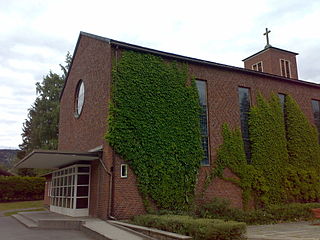 W
WRøa Church is a church center in Oslo, Norway. The church room has 300 seats, but this can be increased to 500 by opening the sliding doors to the parish hall. The church building also includes offices, a wing of verger housing and daycare. There is an almost separate bell tower.
 W
WThe Seminarium Fredericianum or Bergen Daycare is located at Asylplass 2 in Bergen's Bergenhus district and today it houses Norway's oldest preschool.
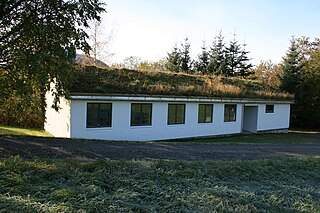 W
WThe Sivert Aarflot Museum is a division of the Sunnmøre Museum Foundation in Norway. The museum is named after Sivert Aarflot (1759–1817), who among other things started the first rural printing shop in Norway. The Sivert Aarflot Museum has a permanent exhibition in the museum building at the farm in Ekset in the municipality of Volda, where Sivert Aarflot lived. Among other items, the collection includes printing equipment.
 W
WPS Skibladner is the only paddle steamer operating in Norway, it sails on lake Mjøsa.
 W
WSkiptvet Church is a medieval stone church dedicated to the Virgin Mary in Skiptvet in Viken county, Norway. Supposedly built in the second half of the 12th century, it stands on a ridge west of the Glomma River. The church belongs to the Church of Norway and is part of the Deanery of Vestre Borgesyssel in the Diocese of Borg.
 W
WSørkedalen Church is a church in Sørkedalen in Oslo, Norway. The edifice is made of brick and has 250 seats. The church is in the Gothic Revival style. Adjacent to the church is a cemetery. Christian Heinrich Grosch had been tasked to prepare plans and drawings for the church and it was consecrated on September 15, 1865 by Bishop Jens Lauritz Arup. The surrounding cemetery was also consecrated at the same time.
 W
WSaint Mark's Church is a church in the St. Hanshaugen district of Oslo, Norway, completed in 1927. The church has entrances from Schwensen Street no. 15 and on Ullevål Street no. 41.
 W
WStokken Church is a parish church of the Church of Norway in Arendal Municipality in Agder county, Norway. It is located in the village of Saltrød. It is one of the churches for the Moland parish which is part of the Arendal prosti (deanery) in the Diocese of Agder og Telemark. The white, wooden church was built in a long church design in 1878 using plans drawn up by the architect Johan Christoff Friedrich Reuter. The church seats about 400 people.
 W
WTechnical and Industrial Cultural Heritage in Norway encompasses discontinued industrial and other facilities with great historical and architectural value. It is one of the ten conservation programs for the Norwegian Directorate for Cultural Heritage, which seeks to refurbish and preserve a representative range of facilities linked to Norway's most important industrial routes, which has had a significant impact on local business history.
 W
WThe Toka Gorge is a river gorge in Kvam, Norway. The gorge lies west of the village of Norheimsund in Hordaland county.
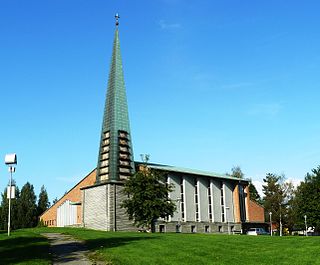 W
WTonsen Church is a church in Oslo, Norway which was built in 1961. It is located at Årvoll in the borough of Bjerke. The church was constructed by the architects Georg Greve (architect) and Geir Grung.
 W
WTromøy Church is a parish church of the Church of Norway in Arendal Municipality in Agder county, Norway. It is located in the village of Brekka on the east coast of the island of Tromøy. It is one of the churches for the Tromøy parish which is part of the Arendal prosti (deanery) in the Diocese of Agder og Telemark. The white, stone church was built around the year 1150 using plans drawn up by an unknown architect. The church seats about 290 people. This was the main church for the municipality of Tromøy from 1878 until its dissolution in 1992.
 W
WTronka is a detached, monumental wooden building built in the classical style in the Kalvskinnet neighborhood of Trondheim.
 W
WUlnes Church is a historic church in Ulnes in the municipality of Nord-Aurdal in Innlandet county, Norway. The long church is located in the traditional district of Valdres. It can accommodate 170 people.
 W
WThe Urdi House is a manor house in the Gyldenpris neighborhood just outside downtown Bergen, Norway. It is located at Michael Krohn Street no. 62. The house is a prime example of late Empire style architecture. The architect that designed the house is uncertain, but it has been attributed to the town surveyor Ole Peter Riis Høegh, who was active in the town between 1834 and 1848. The Urdi House received protected status in 1927.